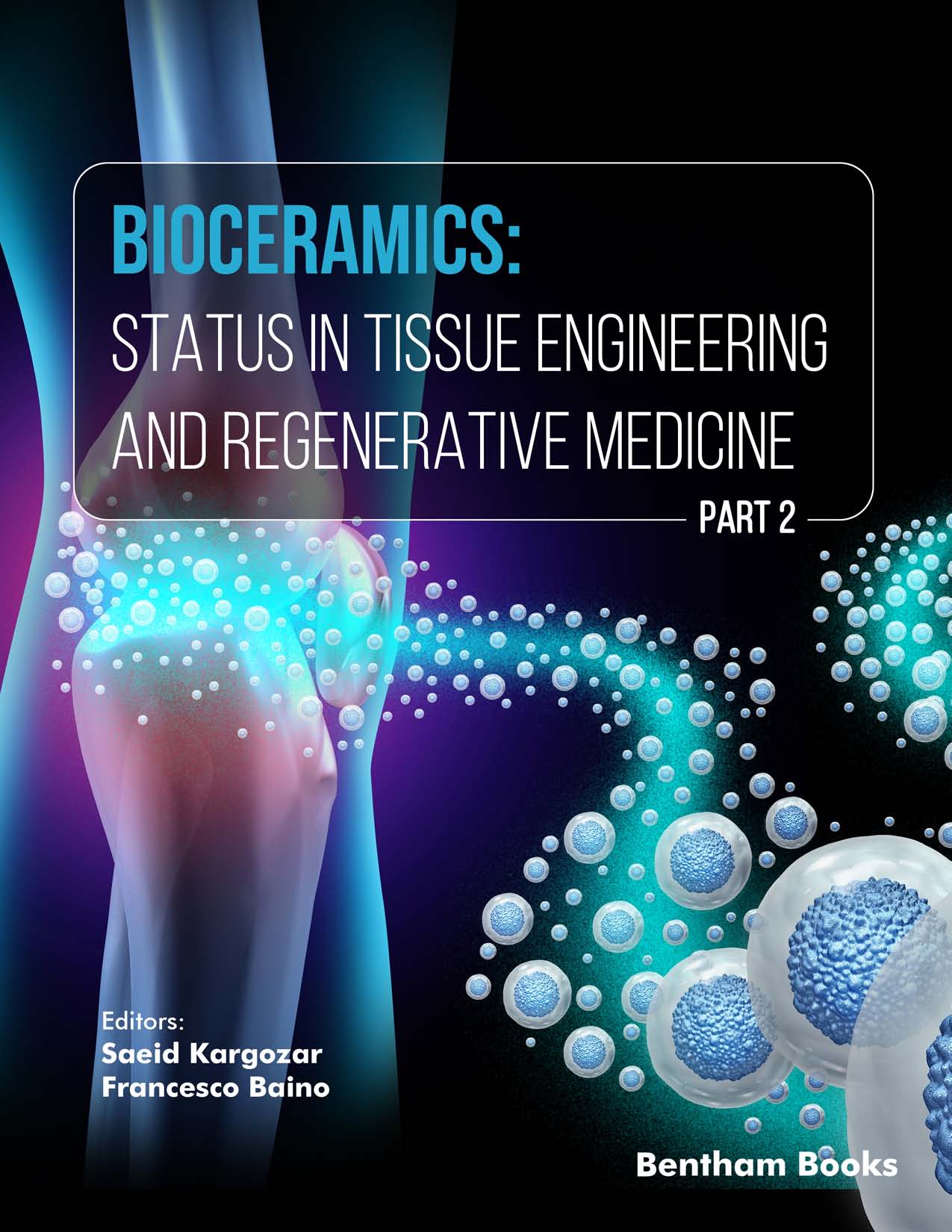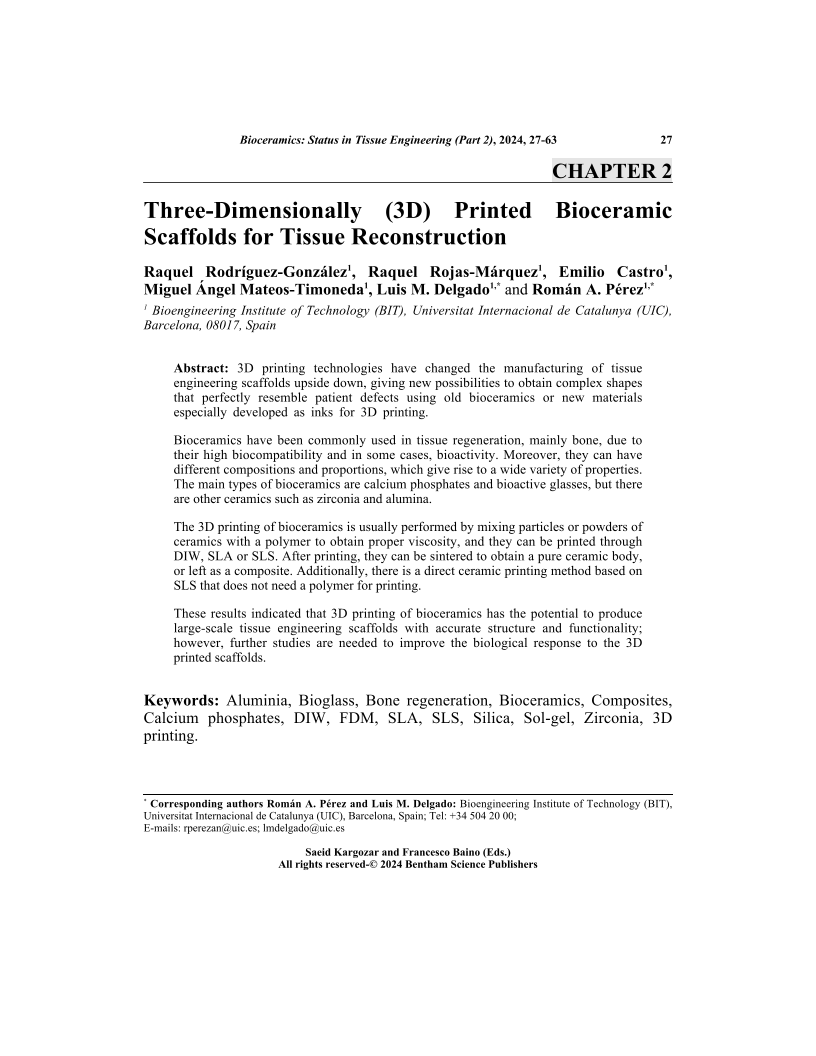Three-Dimensionally (3D) Printed Bioceramic Scaffolds for Tissue Reconstruction

- Authors: Raquel Rodríguez González1, Raquel Rojas-Márquez2, Emilio Castro3, Miguel Ángel Mateos-Timoneda4, Luis M. Delgado5, Román A. Pérez6
-
View Affiliations Hide Affiliations1 Bioengineering Institute of Technology (BIT), Universitat Internacional de Catalunya (UIC), Barcelona, 08017, Spain 2 Bioengineering Institute of Technology (BIT), Universitat Internacional de Catalunya (UIC), Barcelona, 08017, Spain 3 Bioengineering Institute of Technology (BIT), Universitat Internacional de Catalunya (UIC), Barcelona, 08017, Spain 4 Bioengineering Institute of Technology (BIT), Universitat Internacional de Catalunya (UIC), Barcelona, 08017, Spain 5 Bioengineering Institute of Technology (BIT), Universitat Internacional de Catalunya (UIC), Barcelona, 08017, Spain 6 Bioengineering Institute of Technology (BIT), Universitat Internacional de Catalunya (UIC), Barcelona, 08017, Spain
- Source: Bioceramics: Status in Tissue Engineering and Regenerative Medicine (Part 2) , pp 27-63
- Publication Date: December 2024
- Language: English
Three-Dimensionally (3D) Printed Bioceramic Scaffolds for Tissue Reconstruction, Page 1 of 1
< Previous page | Next page > /docserver/preview/fulltext/9789815313895/chapter-2-1.gif
3D printing technologies have changed the manufacturing of tissue engineering scaffolds upside down, giving new possibilities to obtain complex shapes that perfectly resemble patient defects using old bioceramics or new materials especially developed as inks for 3D printing. Bioceramics have been commonly used in tissue regeneration, mainly bone, due to their high biocompatibility and in some cases, bioactivity. Moreover, they can have different compositions and proportions, which give rise to a wide variety of properties. The main types of bioceramics are calcium phosphates and bioactive glasses, but there are other ceramics such as zirconia and alumina.The 3D printing of bioceramics is usually performed by mixing particles or powders of ceramics with a polymer to obtain proper viscosity, and they can be printed through DIW, SLA or SLS. After printing, they can be sintered to obtain a pure ceramic body, or left as a composite. Additionally, there is a direct ceramic printing method based on SLS that does not need a polymer for printing.These results indicated that 3D printing of bioceramics has the potential to produce large-scale tissue engineering scaffolds with accurate structure and functionality; however, further studies are needed to improve the biological response to the 3D printed scaffolds
-
From This Site
/content/books/9789815313895.chapter-2dcterms_subject,pub_keyword-contentType:Journal -contentType:Figure -contentType:Table -contentType:SupplementaryData105

